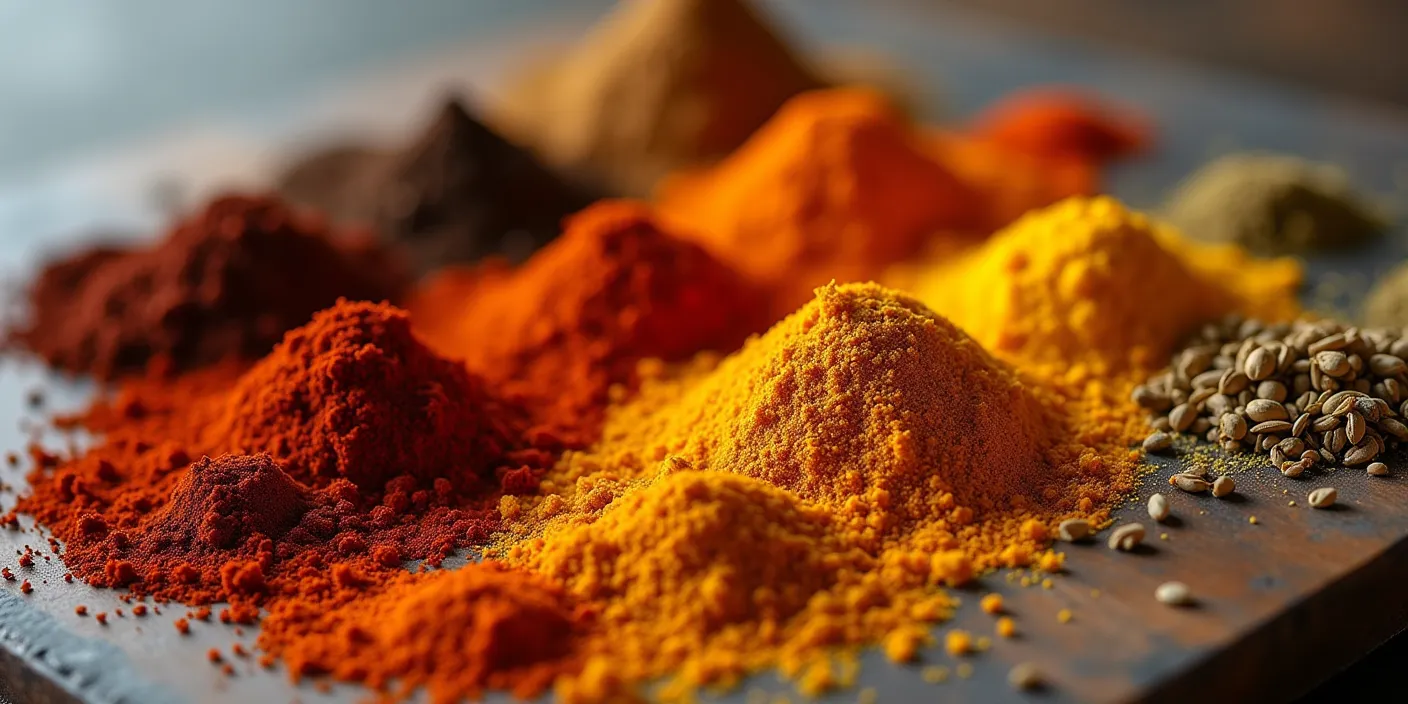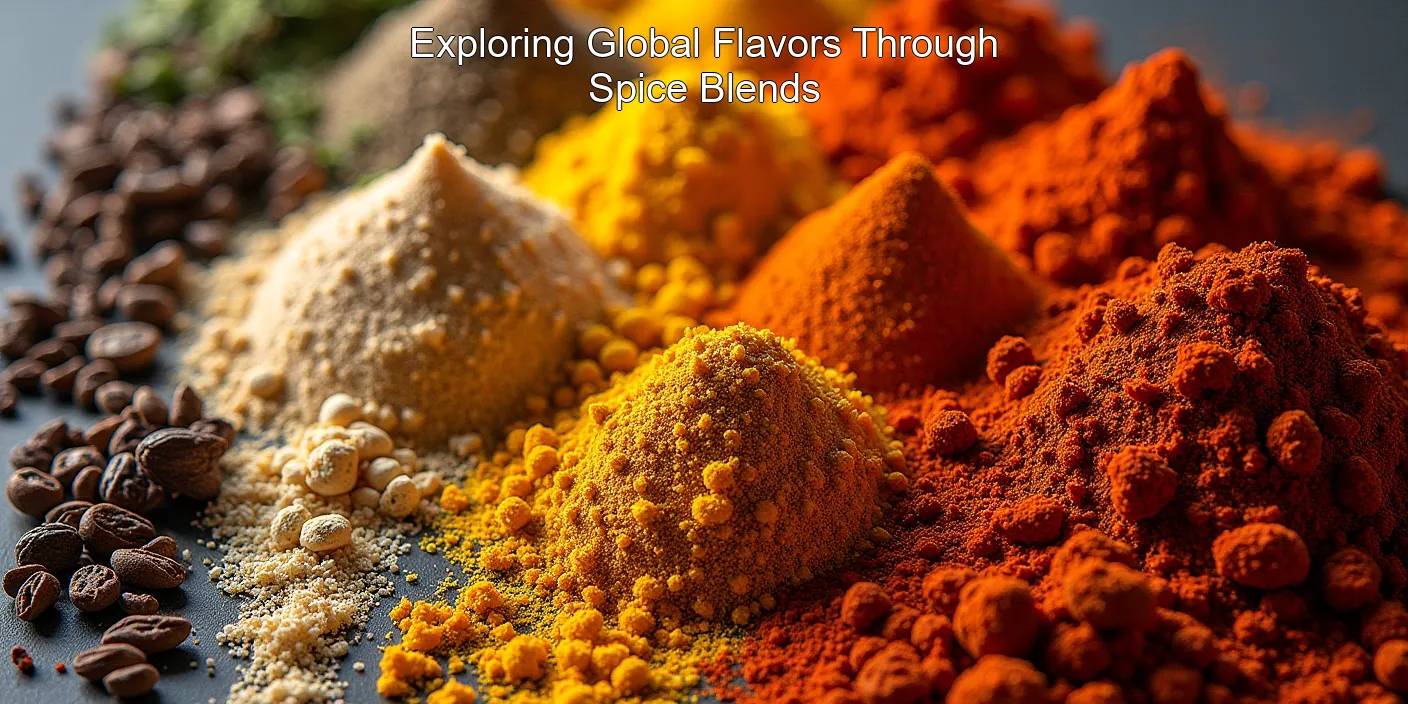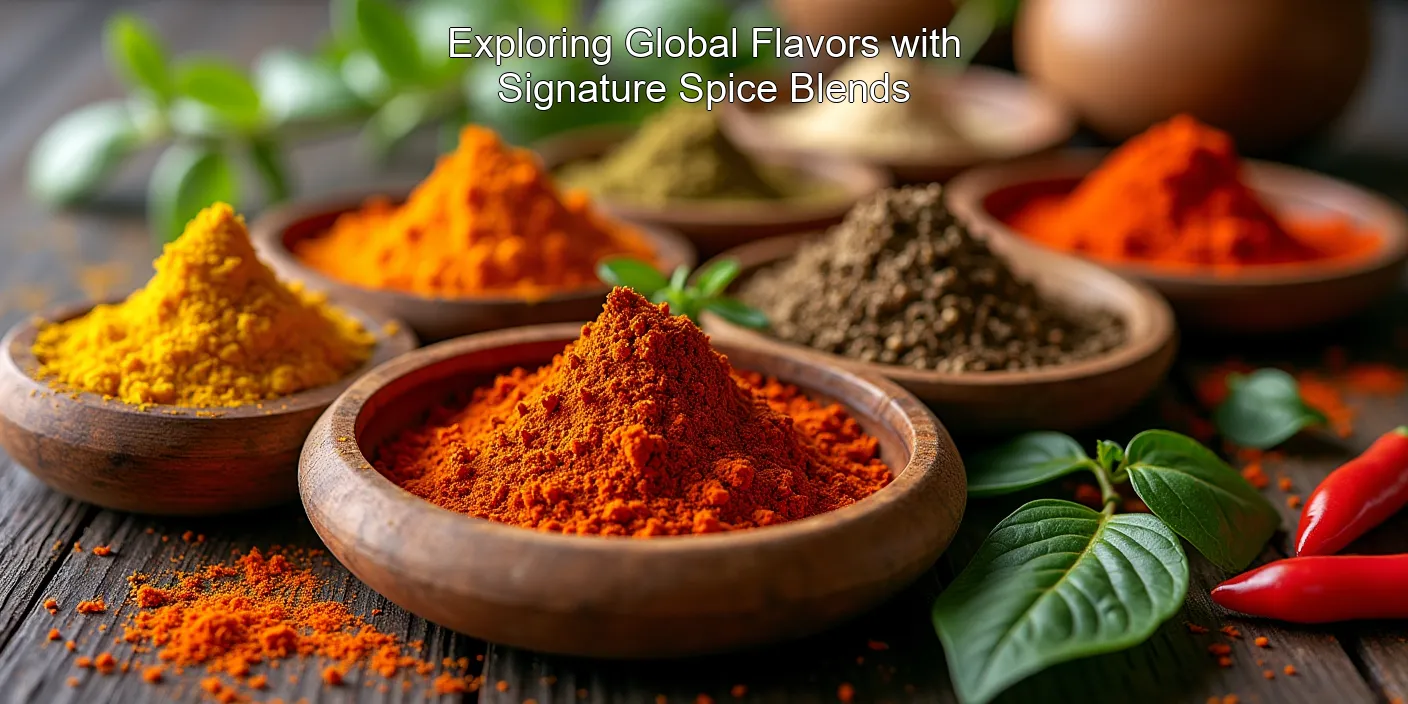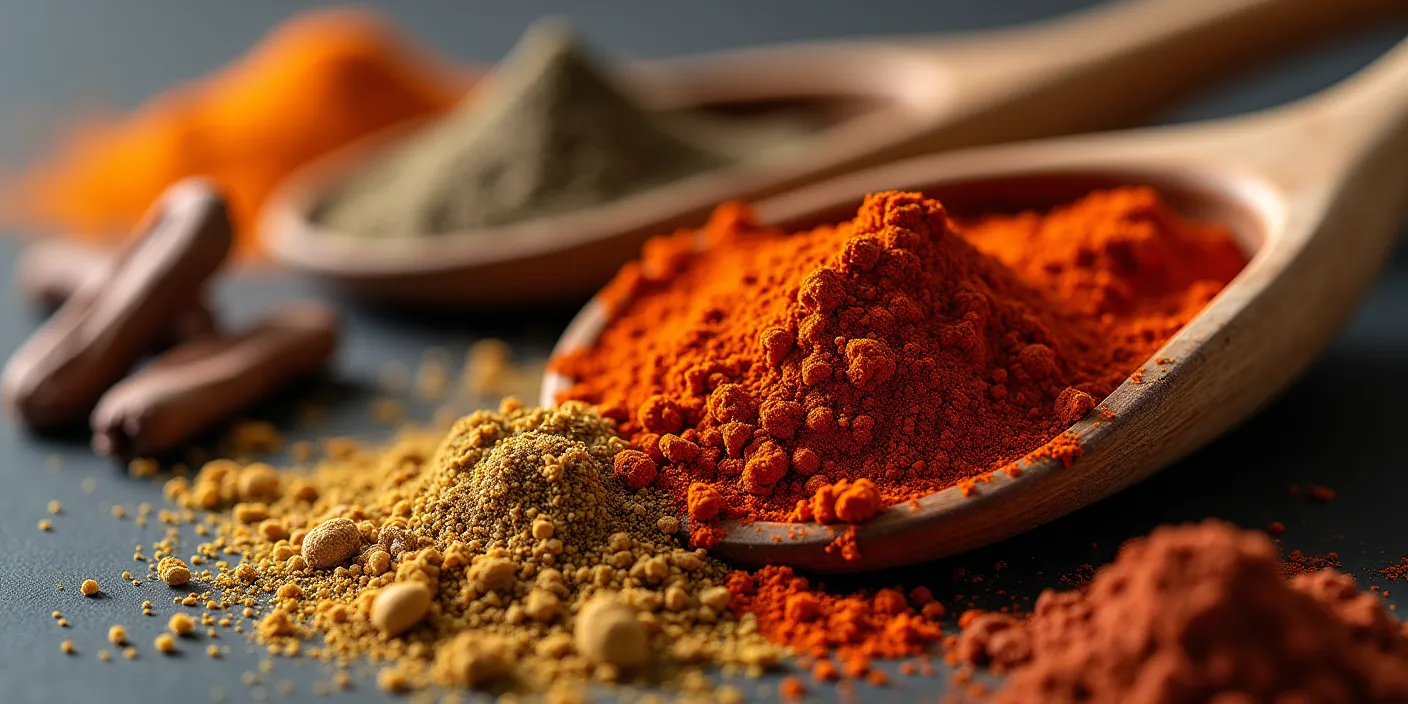Unlock Culinary Magic: Top Chef-Recommended Spice Blends for Flavor Mastery
| Key Points | Benefits |
|---|---|
| Expertly crafted spice blends | Enhanced flavor profiles |
| Time-saving kitchen hack | Consistent taste in dishes |
| Versatile culinary applications | Elevated home cooking experience |
Elevate your culinary creations with these chef-approved spice blends:

#SpiceBlends, #ChefsSecrets, #CookingTips
- Garam Masala: A warming Indian blend
- Herbes de Provence: A fragrant French mixture
- Za’atar: A tangy Middle Eastern seasoning
- Cajun Seasoning: A spicy Southern US blend
“A well-crafted spice blend is like a symphony for the palate – each component plays its part in creating a harmonious flavor experience.” – Chef Alain Ducasse
FAQ: Mastering Spice Blends
Q: How long do homemade spice blends last?
A: When stored in airtight containers away from heat and light, homemade spice blends can last up to 6 months.
Q: Can I adjust the ratios in pre-made spice blends?
A: Absolutely! Feel free to tweak the proportions to suit your taste preferences.
Q: What’s the best way to toast spices for blends?
A: Toast whole spices in a dry skillet over medium heat until fragrant, then cool before grinding.
5 Tips for Creating Your Own Signature Spice Blend
- Start with fresh, high-quality spices
- Balance flavors: sweet, spicy, savory, and aromatic
- Toast whole spices before grinding for deeper flavor
- Experiment with small batches before scaling up
- Label and date your blends for future reference
According to a survey by the National Restaurant Association, 66% of professional chefs consider unique spice blends a top culinary trend for enhancing global flavors in dishes.
Global Spice Blends: A Journey Around the World

| Region | Popular Spice Blend | Key Ingredients |
|---|---|---|
| North Africa | Ras el Hanout | Cumin, coriander, cinnamon |
| Caribbean | Jerk Seasoning | Allspice, scotch bonnet, thyme |
| Ethiopia | Berbere | Chili peppers, fenugreek, ginger |
Explore the world through your taste buds with these Global Cuisine inspired spice blends:
“Spice Odyssey: Unleashing Global Flavors from Your Kitchen”
- Chinese Five Spice: A balanced blend of sweet and savory
- Baharat: A warm Middle Eastern all-purpose seasoning
- Shichimi Togarashi: A spicy Japanese seven-spice mix
“Spice blends are the passport to global flavors – they allow you to travel the world without leaving your kitchen.” – Chef Marcus Samuelsson
FAQ: Exploring Global Spice Blends
Q: How can I incorporate global spice blends into everyday cooking?
A: Try using them as rubs for meats, sprinkle on roasted vegetables, or add to soups and stews for an instant flavor boost.
Q: Are there any Healthy Eating benefits to using spice blends?
A: Many spices have anti-inflammatory and antioxidant properties, potentially offering health benefits when used regularly in cooking.
Q: Can I use global spice blends in vegetarian dishes?
A: Absolutely! They’re excellent for adding depth to plant-based proteins, grains, and vegetables.
4 Steps to Mastering Global Spice Blends
- Research traditional uses of each blend
- Start with small amounts to familiarize yourself with the flavors
- Pair blends with complementary ingredients from the same cuisine
- Experiment with fusion dishes combining different cultural flavors
A study by the International Food Information Council found that 65% of consumers are interested in trying new global flavors, with spice blends being a key driver of this trend.
Ready to dive deeper into the world of culinary expertise? Explore our Chef’s Secrets for more professional tips and tricks. And if you’re short on time, don’t miss our Quick & Easy Recipes that make great use of these flavorful spice blends!
Unlocking Culinary Magic: Essential Spice Blends
| Spice Blend | Origin | Key Ingredients | Best Used In |
|---|---|---|---|
| Garam Masala | India | Coriander, Cumin, Cardamom | Curries, Stews |
| Herbes de Provence | France | Thyme, Basil, Oregano | Roasted Meats, Vegetables |
| Za’atar | Middle East | Sumac, Sesame Seeds, Dried Herbs | Breads, Dips |
Elevate your cooking with these chef-recommended spice blends that promise to transform ordinary dishes into extraordinary culinary experiences. Let’s explore the world of flavors that can turn you into a kitchen maestro!
- Garam Masala: The heart of Indian cuisine
- Herbes de Provence: A taste of the French countryside
- Za’atar: Middle Eastern magic in a blend
- Ras el Hanout: North African spice symphony
- Chinese Five Spice: Balance of sweet and savory
“A well-crafted spice blend is like a painter’s palette – it gives you the tools to create masterpieces in the kitchen.” – Chef Gordon Ramsay
According to a survey by the American Spice Trade Association, 86% of home cooks believe that using the right spices is crucial for creating flavorful dishes.
Frequently Asked Questions
Q: How long do spice blends typically last?
A: When stored properly in airtight containers away from heat and light, most spice blends can last up to 1-2 years.
Q: Can I make my own spice blends at home?
A: Absolutely! Creating your own blends allows you to customize flavors to your taste preferences.
Q: What’s the best way to use spice blends in cooking?
A: Start with small amounts and adjust to taste. Toast spices before use to enhance their flavors.
Tips for Using Spice Blends Like a Pro
- Toast whole spices before grinding for deeper flavors
- Experiment with blends in marinades and rubs
- Use spice blends to elevate simple dishes like roasted vegetables
- Pair complementary blends for unique flavor profiles
A study published in the Journal of Ethnic Foods found that using traditional spice blends can increase the antioxidant content of meals by up to 30%, offering both flavor and health benefits.
Exploring Global Flavors Through Spice Blends

| Region | Popular Blend | Flavor Profile |
|---|---|---|
| Mediterranean | Italian Seasoning | Herbal, Earthy |
| Caribbean | Jerk Seasoning | Spicy, Aromatic |
| North Africa | Dukkah | Nutty, Crunchy |
Embark on a culinary journey around the world with these diverse spice blends. Each blend tells a story of cultural heritage and regional flavors, allowing you to bring global cuisine to your kitchen.
“Spice Odyssey: Recreating Global Cuisines with Heritage Blends”
- Mediterranean blends: A harmony of herbs and sun-dried flavors
- Caribbean spices: Bold, vibrant, and often with a kick
- African blends: Complex layers of earthy and aromatic notes
- Asian mixes: Balancing sweet, sour, salty, and umami
“Spice blends are the secret language of cuisines around the world. Learn to speak it, and you’ll never cook a boring meal again.” – Chef Yotam Ottolenghi
The global spice market is projected to reach $30.5 billion by 2026, with a growing interest in authentic, regional flavors driving demand.
Q: How can I incorporate international spice blends into my everyday cooking?
A: Start by using them in familiar dishes to add a new twist, like sprinkling za’atar on roasted chicken or adding garam masala to vegetable soup.
Q: Are there any spice blends that are universally loved across cultures?
A: While tastes vary, blends like garlic and herb seasoning or simple curry powders are widely appreciated in many cuisines.
Q: How do I know which spice blend pairs best with different proteins?
A: Generally, robust meats like beef pair well with bold blends, while lighter proteins like fish complement more delicate herb mixes.
Best Practices for Spice Blend Exploration
- Start with small amounts to familiarize yourself with new flavors
- Research traditional uses of spice blends for authentic pairings
- Host themed dinner parties to showcase different global blends
- Create a spice blend journal to track your favorites and experiments
A recent culinary trend report indicates that 72% of millennials are eager to try foods featuring global flavors, with spice blends being a key entry point to international cuisines.
Ready to spice up your culinary repertoire? Dive deeper into the world of flavors with our Global Cuisine section for more inspiration. For those looking to balance flavor with nutrition, check out our Healthy Eating tips on incorporating spices for both taste and wellness.
Whether you’re a seasoned chef or a curious home cook, mastering the art of spice blends can elevate your dishes to new heights. Explore our Chef’s Secrets for expert advice on creating your own signature blends. And for those busy weeknights, don’t miss our Quick & Easy Recipes that make great use of these flavorful mixes. Happy cooking!
Unlocking Culinary Magic with Expert Spice Combinations
Are you ready to elevate your cooking game? Let’s dive into the world of chef-recommended spice blends that can transform your dishes from ordinary to extraordinary. These carefully crafted combinations will tantalize your taste buds and bring professional flair to your home kitchen.
| Spice Blend | Cuisine | Key Ingredients |
|---|---|---|
| Garam Masala | Indian | Cumin, Coriander, Cardamom |
| Herbes de Provence | French | Thyme, Basil, Oregano |
| Za’atar | Middle Eastern | Sumac, Sesame Seeds, Thyme |
Here are some popular spice blends that chefs swear by:
- Garam Masala: The heart of Indian cuisine
- Herbes de Provence: A taste of the French countryside
- Za’atar: Middle Eastern magic in a mix
- Cajun Seasoning: Spicy Southern charm
- Chinese Five Spice: Balance and harmony in Asian dishes
“A well-crafted spice blend is like a symphony for the palate. It can elevate a simple dish to gourmet status in seconds.” – Chef Gordon Ramsay
Q: How long do homemade spice blends last?
A: When stored in an airtight container in a cool, dark place, homemade spice blends can last up to 6 months.
Q: Can I customize these spice blends?
A: Absolutely! Feel free to adjust the ratios or add your favorite spices to create your signature blend.
Q: What’s the best way to use these spice blends?
A: Start with a small amount and taste as you go. You can always add more, but you can’t take it away!
Tips for Creating Your Own Spice Blends
- Start with fresh, high-quality spices
- Toast whole spices before grinding for enhanced flavor
- Use a dedicated spice grinder for the best results
- Experiment with different combinations
- Label and date your blends for future reference
Did you know? According to a survey by the National Restaurant Association, 75% of chefs consider unique spice blends a top culinary trend for enhancing flavor profiles in dishes.
Exploring Global Flavors with Signature Spice Blends

| Region | Signature Blend | Popular Dish |
|---|---|---|
| North Africa | Ras el Hanout | Tagine |
| Caribbean | Jerk Seasoning | Jerk Chicken |
| Ethiopia | Berbere | Doro Wat |
Let’s take a culinary journey around the world with these exotic spice blends:
“Spice Odyssey: Unleashing Global Flavors in Home Cooking”
- Ras el Hanout: A complex North African blend
- Jerk Seasoning: Fiery Caribbean flavors
- Berbere: Ethiopia’s spicy red gold
- Dukkah: Egyptian nutty, crunchy goodness
- Shichimi Togarashi: Japan’s seven-flavor chili pepper
“Spices are the treasures of the culinary world. They tell stories of culture, history, and tradition in every pinch.” – Chef Yotam Ottolenghi
Q: Where can I find these exotic spice blends?
A: Many specialty food stores and online retailers offer authentic spice blends. You can also try making them at home!
Q: Are these spice blends very hot?
A: Heat levels vary. Some, like Jerk seasoning, can be quite spicy, while others, like Dukkah, are more aromatic than hot.
Q: How can I incorporate these blends into my cooking?
A: Use them as rubs for meats, sprinkle on roasted vegetables, or add to soups and stews for an instant flavor boost.
Best Practices for Using Global Spice Blends
- Research the traditional uses of each blend
- Start with small amounts to familiarize yourself with the flavors
- Pair with complementary ingredients from the same cuisine
- Use as a finishing touch for maximum impact
- Store in airtight containers to preserve freshness
Interesting fact: A study by the International Journal of Gastronomy and Food Science found that dishes featuring complex spice blends were rated 30% more favorably by diners compared to those with single spices.

Ready to spice up your culinary repertoire? Dive deeper into the world of flavors with our Global Cuisine section. For those looking to create quick and delicious meals with these spice blends, check out our Quick & Easy Recipes. If you’re curious about the health benefits of various spices, explore our Healthy Eating category. And for more insider tips from professional chefs on using spice blends, don’t miss our Chef’s Secrets page.



